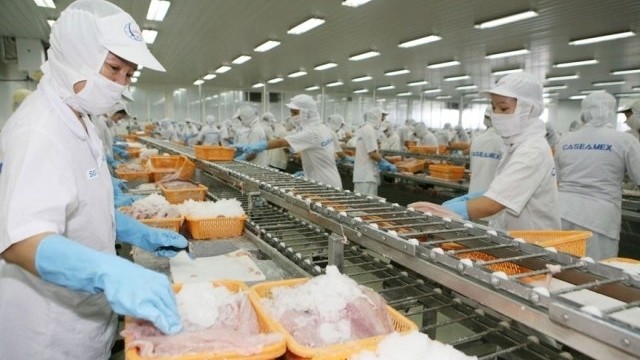Many fishery orders for exports delayed
According to statistics from the General Department of Vietnam Customs, by the end of February 2020, the country's fisheries export revenue reached over US$991 million, down nearly 11% over the same period last year. In particular, fisheries exports to China decreased sharply by 20%; meanwhile exports to other markets (such as ASEAN, the Republic of Korea) dropped by 4% and 9% year-on-year respectively.
The Covid-19 pandemic has been seriously affecting many economic sectors such as transportation, tourism, retail, stock market, courier, logistics; therefore, the production, business and export activities of the fisheries sector will be affected at least until the end of the first half of 2020.
According to tra fish (pangasius) export enterprises, almost all new export orders of tra fish to China, the biggest market, were delayed or interrupted in January. However, since March, the epidemic has spread to Europe. In some countries, customers have suspended all transactions; meanwhile restaurants and hotels are closed to lessen the risk of the pandemic spreading. New orders have not been received, leading to a large backlog of inventories. By mid-March 2020, many orders from the Middle East, Asia or South America also began to be congested, cancelled or suspended. Until now, the productivity of most fisheries has been affected due to a lack of raw materials (except tra fish enterprises). However, orders for food services have now been suspended, except those for retailers..
Around 35%-50% of shrimp export orders to the US and EU have been delayed or cancelled due to the large inventories of both exporters and importers. Although in many importing countries, suppliers have discounted 25-30% of the products’ price, it has been difficult to stimulate demand. Despite these difficulties, many enterprises have tried to maintain jobs for workers, redistributing their work schedules to suit the corresponding reduced wages, while taking the opportunity to train workers in the meantime.
Fisheries proactively stabilise their markets
The Vietnam Association of Seafood Exporters and Producers (VASEP) said that tra fish was the commodity that was most affected by Covid-19 epidemic, because China was the largest importer of Vietnam’s tra fish. The stagnant retail sector, supermarkets and a congested delivery system have led to a sharp decline of 52% in exports to this market in the first two months. The total export revenue of tra fish reached US$210 million in the past two months, a year-on-year decrease of 32%.
The farming area has decreased, so the output of tra fish could see reductions of 10-20% in 2020. Exports are expected to increase slightly in the third and fourth quarters, leading to a shortage of fish next year, especially in the first quarter. Several tra fish enterprises predicted their exports to China could recover 50% in April, 70% in May and fully 100% in June.
VASEP also noted that the enterprises should expand farming areas or make more complete conditions for tra fish farming in preparation for 2021. They should especially focus on the inspection programmes of the Food Safety and Inspection Service (FSIS) under the US Department of Agriculture regarding eligible farms. It is also crucial to create favourable conditions to boost exports to this market after the Covid-19 epidemic is controlled.
While the exports of tra fish have been heavily affected, shrimp exports increased slightly by 2.6% (US$383 million) by the end of February, mainly thanks to the stability of the Japanese market.
However, currently, shrimp materials are lacking, so enterprises cannot buy shrimp with the desired price due to the complicated situation of Covid-19 epidemic. Businesses are promoting two basic measures: allocating finance and resources to overcome these difficult times and ensure orders as well as rebalancing the market structure to avoid dependence on China and the Republic of Korea. In addition, they hope that the shrimp exports to China will recover by April and they will focus on official trade via seaports towards stability.
















